1/ Skaturbanism in Bordeaux’s cour Mably, brief reminder
Flashback to spring 2024 (and even further).
The cour Mably, historically speaking, has been:
- a Dominicans convent
- the headquarters of the society of the Friends of the Constitution
- a public library
- a lapidary museum, dedicated to the conservation of stone sculptures and monumental remains
The city hall allowed the reunion in the place and its chapter house, a former place for communication. This is David Manaud’s words, for the first time here:
“It makes me SO MUCH think of this Vidocq’s scene…”
Actually a scene of the movie has been shot on the rooftops of the buildings of the cour Mably near the Notre-Dame church of Bordeaux.
“Skaturbanism” what are you talking about?
Skating is about organizing movements in a methodical way. Urbanism and architecture require a similar classification.
It is obviously to submit to the laws of physics and much more to legal rules; “skating” resonates as disturbances, damages and many people complain about the growth of skaters.
It’s been many years that Bordeaux brings influential skaters together. Léo Valls is the first skateboarder originally from Bordeaux who has been inspired by skateboarding contributions to the city. In its own way skateboarding reveals the interdependencies between residents, workers and different authorities. This solidarity can only lead to public utility. City Skate Collective, Côte Ouest, Léo Valls and every stakeholder of Connect first edition had suggested forms of action to capture and captivate the people and invite them to act for the common good of a city and understand through the prism of a game that skateboarding, since the seventies, had to be seen as a social phenomenon whose aim was about leading people to a coexistence respectful of the city – as a space of expression – respectful of its infrastructures and, especially, of the people.
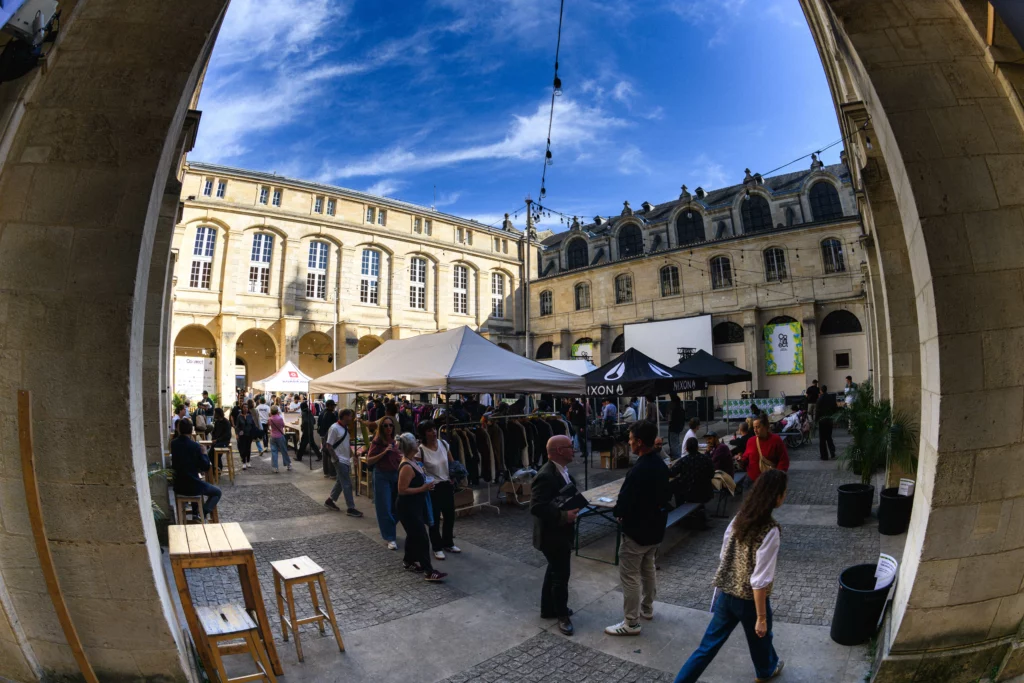
2/ Symboles, symbolism(s)
Is skateboarding concerned by the AI? In all probability Connect will “overview” the current and problematic issue.
First, AI is a polluting industry. Then, in the height of cynicism, you check the thrilling ChatGPT. Here the contradictions of efficiency!
Unfortunately the great @sw_greend Instagram account (yet) does not deal with the matter. So you need to rely on a “simple” search engine.
You read a famous science-fiction author, who died a year ago who “staged” the very AI concept. According to him human beings obviously rely on the AI principle. According to humanities and social sciences, the concept of modernity relies on the fact that “thanks to” the improving knowledge and the exploitation of technical and technological resources – at the expense of natural resources – the access to information would not stop being faster and faster.
What about skateboarding then?
Search engine…outstanding outcomes! A selection of articles (written in French) of a deep boredom: “improved” skateboards which move forward thanks to an electronic signal. “Something” similar to a skateboard but even more dangerous which does not encourage surpassing oneself.
English translation. Access the reference website: Jenkem. If the article mentioned AI, associated with skateboarding, it was only because some competitions now called upon a jury, commissioned by AI.
Science- fiction…? The machine, in this register, is often the enemy! However, skateboarding is already an infernal machine: it generates self-transcendence through the cracking of cartilaginous tissues, accelerates particles of frustration when the trick is not landed, and an unhealthy development of the competitive spirit.
Skateboarding must keep an element of mystery, even if it means persisting in the symbolist theme: let’s keep this cult of ideas, this limitless aesthetic sense!
But, first of all, do not think too ineffectively!
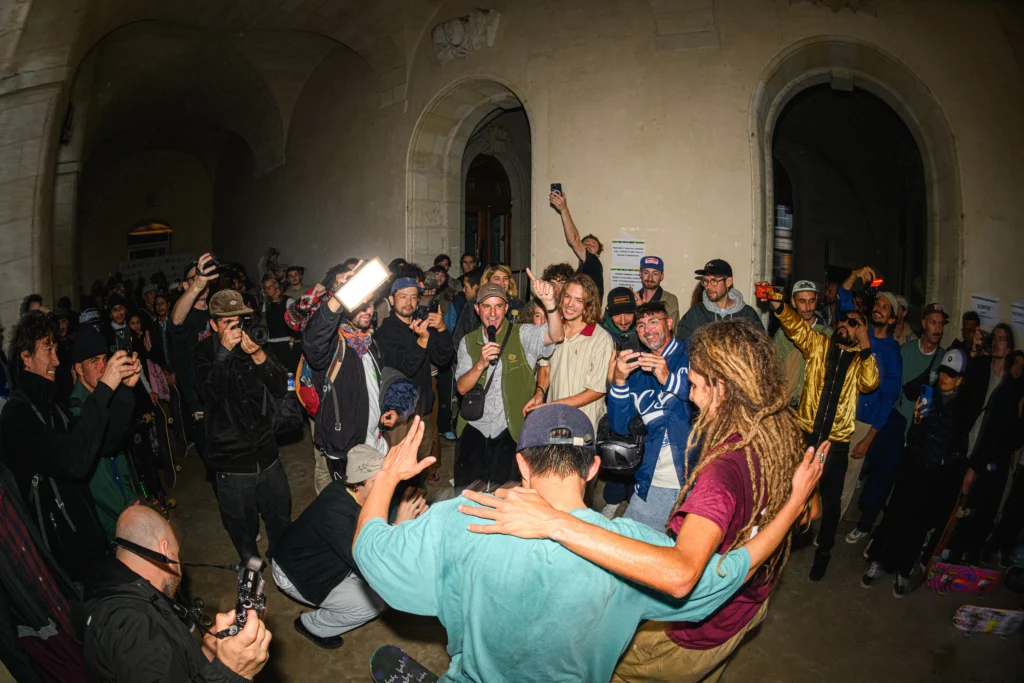
3/ Why participate in the Connect festival?
In 2024, I decided to moderate two skaturbanism panels; I decided to focus on the famous(!) goodwill.
According to the least charitable souls, those who seem to think in the place of others, it would be an overused representation; however we could not simply disrespect the desire to respect each individual. The most reductive views of the analysis, the ones telling that “we-can-no-longer-say-anything”, opposed to the good works of the “self-righteous” people were a waste of time.
Supported by a team of volunteers the Connect festival crew wants to satisfy its audience, these individuals who are curious enough to discover the different aspects of skaturbanism; around the world, showing some respect to these non-profit organizations, who would never have met if this famous goodwill – and skateboarding! – have not been at the very heart of the project. It was a pleasure!
It is not only about skateboarding! It is about evoking its good nature and its relationship to urban planning. While promoting this international fest, on social networks and other platforms of expression, in continuing our investigations in terms of skateboarding, urban planning and respecting everyone, this festival will be a hometown glory!
Being myself part of a humanitarian organization I know that my contribution to all these projects will not save the world. However there was a famous cast of French actors, actresses and comedians who once told to warrant their scabrant humor, which had made their success (and justified their political ethics), that they obviously “know that the Great Day will never happen but [if they] can ensure that the “Early Morning” comes that’s something!”
4/ Cool pollution
Released on Dutch record company Knekelhuis LE DON DES LARMES by French-Algerian musician LÉO LA NUIT is a great release. Léo is the first name that the artist gave to her new born child. The record was composed and recorded during her pregnancy; it is a soft-pop music record, of North African folk music, flirting with mysterious experimental sounds à la Nico, the famous German model converted into an actress and then a singer and musician during the sixties and told stories with Celtic, Germanic and Oriental influences.
I wonder if I would have loved to skate listening to these tracks when I was younger and in great shape. I actually think that every musical expression could be a part of a good skate session, thus it could be a part of the editing of a skate video!
From rap music to black metal – and on an even more advanced level – from bands like Death In June or This Mortal Coil, including jazz music or reggae dancehall, there always had a connexion between the power and lightness of video sequences, skate tricks and skate lines, attempts or falls captured by the lens of a camera and the recordings of these musicians with varied inspirations.
What about these skaters who are also musicians or who are definitely connected to bands? Jim Muir was a part of one of one the most famous and oldest Worldwide skate teams and his brother Mike was the singer of crossover thrash metal band Suicidal Tendencies from Venice Beach, California. What about Matt Hensley? One of the most acclaimed street skaters from the nineties who was the accordion player of “ celtic punk band” Flogging Molly… One of the most famous skateboarding photographers in the world, whose name is Glenn E. Friedman, was also the one who shot a lot of pictures of bands like Black Flag, Beastie Boys or other artists signed on the hip hop record company Def Jam…which have also supported bands like Slayer (you definitely have to see this famous portrait from 1991 by Tobin Yelland showing John Cardiel in San Francisco in front of a backdrop of the famous band part of the Big Four of the thrash metal bands of the Bay Area).
Connect decided to pay tribute to the unbreakable bond between skateboarding and music, no matter what musical style we are dealing with.
There is only to listen to the soundtrack of Léo Valls’s video parts which have been released for example for the Connect festival and pay homage to the talent of international artists to establish that we cannot think of street skateboarding cacophony without involving genius musicians.
And what about Nicolas Malinowsky? He is Connect festival operating DJ (and a renowned skateboarder, a talented art director, the one of the late CHILL Skatemag) will you someday release the single of this incredible trip-hop track used for a Cliché Skateboard skate tour in Casablanca, twenty years ago? Nicolas’s DJ set is accompanied by Miko and Daslim for a DJ Set during Thursday night, the ones during the MX crew x Ed Banger Records party on Friday Night, women-led jazz performance by Feminine collective Mellifera in the late afternoon on Saturday and Les Vatiques’s DJ set at night and then the final DJ set, the one of DJ Gramboy.
Skateboarding and music share a transmission of sensations and emotions which cannot be ignored
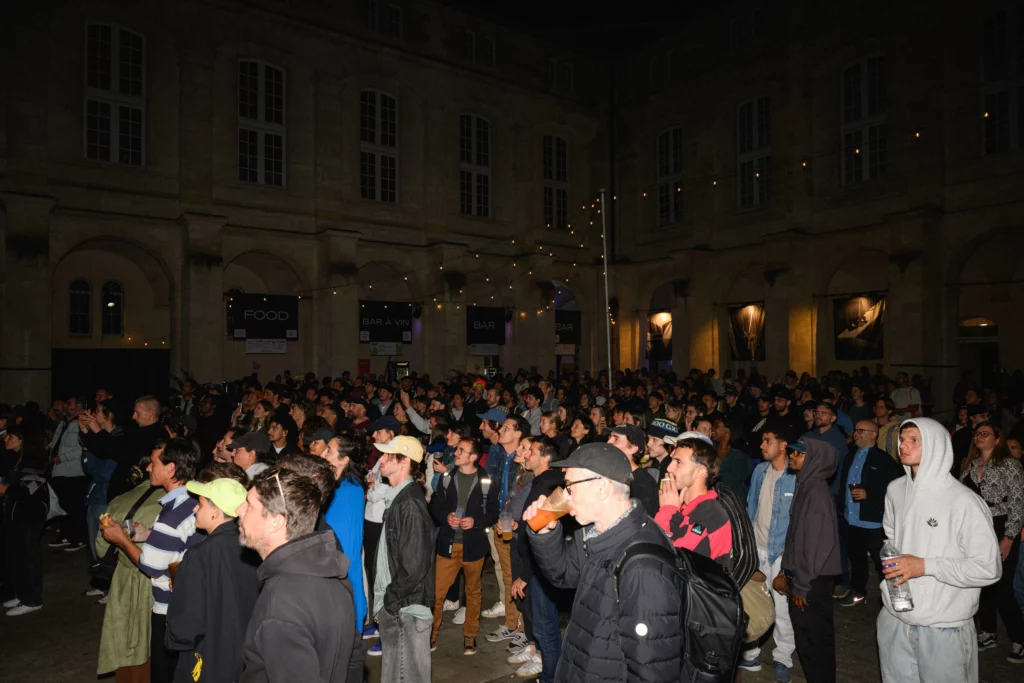
5 – Identity
Identity is a strength for everyone. Skateboarding? It is mostly a mystery. Thus, a skateboarder’s identity…!
Some people never have felt the mysterious and “itching” feeling of some of our brain areas involved in the need of innovations, of decision-making and attraction for the risk.
It has always been mandatory for me to share the passion for skateboarding. When I was a preteen I was prominently displaying my skateboard magazines in the different rooms of the house just because I wanted my parents to discover the things I now loved within skateboarding culture.
I made the necessary arrangements to identify myself as a skateboarder. From now on it was my identity. What could make me face the challenges of life was the feeling of freedom, the feeling of fulfillment and challenge, sometimes the feeling of frustration brought by skateboarding.
During my teenage days I became friends with skateboarders a bit older, most influential but they had admitted that my interest was sincere. From now on I could be a part of their clique, it wasn’t because I was the best: my interest and my passion were sincere.
Nowadays I can barely stand on a skateboard and get away like I used to but I can’t help feeling what a curb used to make me feel by just seeing it and with a little bit more speed.
After all, being a skateboarder is my identity.
When I realized I didn’t have to feel abandoned by skateboarding I paid attention, with curiosity, to the way some people express their strong culture and strong identity with a productive way of life and a positive commitment.
This is the essence of skateurbanism.
Skateboarding, sciences and well-being weren’t contradictory notions.
Skateboarding wasn’t an antisocial and individualist way of expression (sometimes, however, there were exceptions).
Skateboarding and creativity and conceptualization weren’t far from each other or contradictory.
Skateboarding is the revealer of our identity.
6 – Japan
Each continent shows a specific approach and experience of skateboarding.
History and traditions, Culture (in the broad sense), political, territorial and identity organizations differ from one peninsula to the other. Identities build themselves, why not according to an identity which sometimes is more of a caricature than anything else.
If we focus on the following list of keywords: skateboarding, Japan, systems and historical organizations, it will be clear that the debate will focus on mysterious topics. It would deserve a thesis!
Japanese street skating has always suffered from the authoritarianism of the country. We could have thought that it is contrary to its reputation of being a country opened to pop culture. Skateboarding is forbidden though, repressed, it means that you have to skate for a short amount of time on a specific spot before the police show up and reply.
On the other hand some huge skateboard contests take place in skateparks which have been designed and built to be real arenas where the crowd gathered to attend the show.
But at night, in the street, that’s something else!
By the way, it is specific to Japanese skate videos to offer nighttime scenes and the fast and incisive skateboarding. Pretty…ninja style of skateboarding!
Japanese skateboarding is pretty rare on Internet networks, unlike most of the American and European companies.
Japanese skateboarding has its own identity, the Connect festival crew knows it well; within the organization and a lot of the people who have been invited to speak in front of the audience so many of them had crossed the skies to be amazed when they got out of the plane. Japan is a country of contrasts, from traditions to modernity. It’s confusing!
Do the skateboarders find their way there?
Last year Lui Araki displayed his photographs. His work was sensitive, it had definitely impressed the audience. This year again Japan is in the spotlight, with a more theoretical point of view; experts from a Japanese University, fascinated by skateboarding and its connection to urbanism, decided to share their works and ideas to an audience which, for a fact, does not expect to learn so many things!
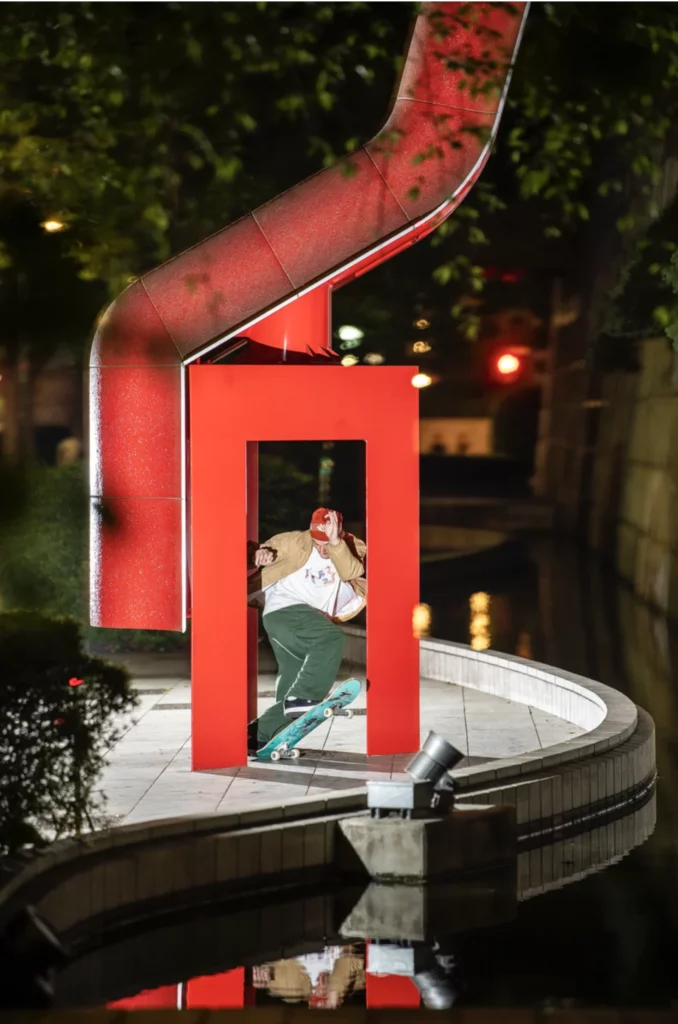
7 – Connect: skateboarding think tank?
The Connect festival can be seen as a think tank which is sometimes seen as a “group of experts”, a “reservoir of thought” or a “laboratory of ideas”.
It is basically a North American approach according to the academic James McGann. He identifies think tanks as “public policy research, analysis and engagement organizations that enable policy makers and the public makers and the public to make informed decisions on public policy”. According to Director of political planning of the Bush Jr/Powell era Richard N. Haas the first of a think tank characteristic to contribute to public policy consists in “generate original ideas and political options”.
The Connect festival invites a community of individuals who want to unveil the evolution – if not the elevation – of the political conceptualization of skateboarding. It is primordial. A simple reading of the word “policy”, in a text which we might think is only dealing with skateboarding, may seem inappropriate; the perception of skateboarding, as a simple hobby, is often reductive: a landlocked hobby…in a skatepark? So be it.
But street skating – and the Connect festival is a probative value – is a hobby both metaphorical and physical. This activity and such free expression mean in advance that it is the result of a choreography of the most technical, indeed, then we must notice that the reflexivity which emerges from the justifications of skateboarding, both objective and symbolic – within the framework of subjects such as public health, information and communication, social work, arts, humanities and especially public interest – is not a trifle; to call upon eminent personalities, such as the School of Management ESSCA, Dr Kirsty Smith, Dr Baptiste Pointillart, director April Jones, Dr Indigo Willing, Dr Marie Mayassi as well as researcher Kai Kagitani – which areas of investigation are diverse and their conclusions fascinating – reveals that the Connect Festival, as an international figure, works towards a testimony of kindness in many ways so that the spirit of an urban game be recognized as of public utility.
Skateboarding, thus, and its corollary the skateurbanism, in addition to being of public utility, should inspire a lot of people invested in the communication of their passions whatsoever to constantly develop new interests, showcasing the enjoyment of these urban spaces, which are sometimes the stage of encouraging solidarities for a peaceful coexistence some political figures around the world weaken and denigrate shamelessly.
8 – Revitalize…
The cornerstone of any skateurbanism project was made when all the people involved in the initiative, especially some skatistas, influential or not – the most fervent worshippers, even administrators(!) of a spot with a unique destiny – agreed that the memory of all these years spent to sublimate urban pieces mustn’t get lost in the bureaucratic doldrums of urban planning.
This is how some people brought back to life Vale do Argambo’s stones, one of Sao Paulo’s famous skate spots for decades, so the memory of the skaters who have had the opportunity to stand out as the interpreters of the works of architects and urban planners could be used for public good.
At least…of another use!
Thanks to people involved in the new Connect festival edition Bordeaux has the honour to welcome Rafael Murolo and Murilo Romao and to present, thanks to the presentation of a video tracing the implementation of the rescue project of Vale – Saving Vale – their involvement as skateboarders (one of them is an architect, the other is a natural communicator) within Flanantes, the famous skate crew, in the process of Brazilian skateurbanism, in Sao Paulo.
The Connect festival decided to share this skate movie because Léo Valls has been to Brazil several times and came back with luggages full of memories. He has met great human beings and told us lots of stories. As far as he remembers, as a skateboarder close to 40yo with, to his credit, a good twenty years of practice, Brazilian skateboarding and skateboarding in Brazil couldn’t go unnoticed. Lots of professional skateboarders from Brazil show skateboarding styles which are their own – from Bob Burnquist to Rodrigo Teixeira including Alex Carolino (and Sergio Santoro… and Mike Mag… a non-extally list, obviously) – but we tend to, at least within international skateboarding, to have a little approach on the political scandals related to corruption of the country, whose poverty lines remain overwhelming and yet it is necessary to be aware that this do not prevent a skateboarding community to get involved in the management of their own affairs, the ones that they hold dear!
It is a certainty: there is a whole section of skateurbanism which shows the importance of skateboarding in the construction of an identity, individual, that’s true but it can’t be individualistic; Saving Vale must be an example for the skate communities around the world and inspire each skater involved in an interpretation of the urban and an interpretation of these dear skate spots in order to preserve this space of expression and push all the users of a city to express their suggestions to honor these places where the live and evolve.

9 – Come back to
Coming together, from year to year, to discuss the encouraging and logical evolution of the Connect festival and skaturbanism is a fascinating activity yet we must seriously take the following observation: despite its commitment to be a considerate and inclusive organization – the Connect festival crew applies to face the vices of our time – error is human; to go through this era of justified misconceptions involves studying the positions and the proposals of all actors and actresses from the effervescence of skateurbanim, even those who could have been surprised by some blunders of the first Connect festival edition.
I will speak on my behalf, being directly concerned by the subject.
Last year I proposed to moderate the exchange between three skate girls of different ages and occupations, around an important roundtable: How to make it when you are a skater girl
I decided to name this approach like this without however knowing which punctuation of which grammatical mood I should have used to be deal with the matter; I’m no linguist – even less a rhetorician – so I agreed to receive observations and criticisms in case this proposal (its title) seems indelicate. A question mark would have meant that my proposals, and those of the women invited to participate, constitute an obvious answer, citing the only necessary commitments to the presentation. Thus a point would have implied to present with confidence and conviction some of the most logical and detailed presentations. What a daunting task! Maybe I decided not to choose a specific formulation.
I am no lecturer, only passionate about skateboarding and human relationships. I’m delighted to have proposed myself to moderate this exchange because I wasn’t surprised at all by the audience’s first intervention. However the situation has disrupted more than one person in the Connect organization.
This gentleman was a visitor from Belgium involved in building D.I.Y. skate spots, an acronym which means do it yourself. The fact that a man moderated this part had tickled him. He decided to speak to highlight the inconsistency of the organization of the Connect festival and was greeted by the audience. I wasn’t destabilized by his observation, on the contrary, I even supported him when we talked together in private after the presentation. However I couldn’t help telling this fellow with a lot of regret – as a part of the organization of the festival – we had to face the obvious reality: we benefited from too little time to find a female speaker and skater as a priority to moderate this panel of the first Connect festival edition.
We always learn from our mistakes!
The Connect festival organization crew may think that the festival obviously is a special area in which we can deal with both urban planning and skateboarding, including the implication of female skateboarders as a minority in the skateboarding culture (which is, obviously, predominately male) like if it was natural for male skaters; it is easy to pretend to be tolerant, caring or inclusive but, in reality, the gender privilege is not about having only some specific biological and physical characteristics: once for all, the nuance and the message we must share is more about the unknown feeling the male skateboarding community will never be able to identify. It seems that the skateboarding community conceives its footprints in society with an approach which aims to be perpetually binary.
We must be reassured: this Connect festival second edition turns out richer!
10 – Skateboarding craft
Art – just as skateboarding – is a form of expression multifaceted and mysterious. Art and skateboarding both shape what is real. Obviously you must acquire some level of knowledge, of references, of reflexions and create adjustments. Old timers must have given to their counterparts, or to a critical audience – beginners and philistines, moreover, must get involved in that process – and posterity. The aim is to propose an interpretation (or even a reinterpretation)of their environment – the systems and the organizations – with a posture, whether it is positive or negative to create an exchange.
Joining the Connect festival for a new edition ten artists, whose forms of expression have been well defined, take up the challenge of showing their ideas and creations to an audience partly made of skateboarders, without a doubt. Maybe some of them do not know that these artists are skateboarders. The approach of these artists is interesting because their work does not have to be understood by individuals who would have been a part of a skate community or, on the contrary, members of an audience of people regulars of openings and exhibitions. Policies – in charge of cultural matters – must understand the skateboarders and artists’s will to send a message to those, like them, who evolve on the pavement but interpret differently its primary functions: those simply relating to living together. Skateboarding and arts are continually adapting to their time and space, like politics. Thus, the repression of each of these forms of expression doesn’t make sense, it’s even counterproductive for the future of the city.
Skateboarding and arts assume that their approach can only be conclusive if the craftsman has been subjected to critics and gave himself the means to be respected (or not, it is also important) by the ones who analyse from year to year these forms of expression. Thus skateboarding and arts are not far from each other. From there to say that skateboarding is an art it’s another debate. However the two forms of expression share sensibilities which define a sense of style. It is interesting to submit it to the analysis, both aesthetic and political, to the extent that it assumes an organization. This organization necessarily has a purpose: the two forms of expression must be interpreted by everyone.
A collective opening – like a skateurbanim festival – is probably a great way to honour a common passion: it defends postures and, risking criticism, it will necessarily have to answer to the questions each individual could ask himself or herself in the context of promoting the values of an environment which, obviously, won’t be revolutionary, what is yet the most interesting aspect of promoting this culture, the mystery of creation will never stop evolving, arousing the public’s interest for the expression of feelings, in any kind.
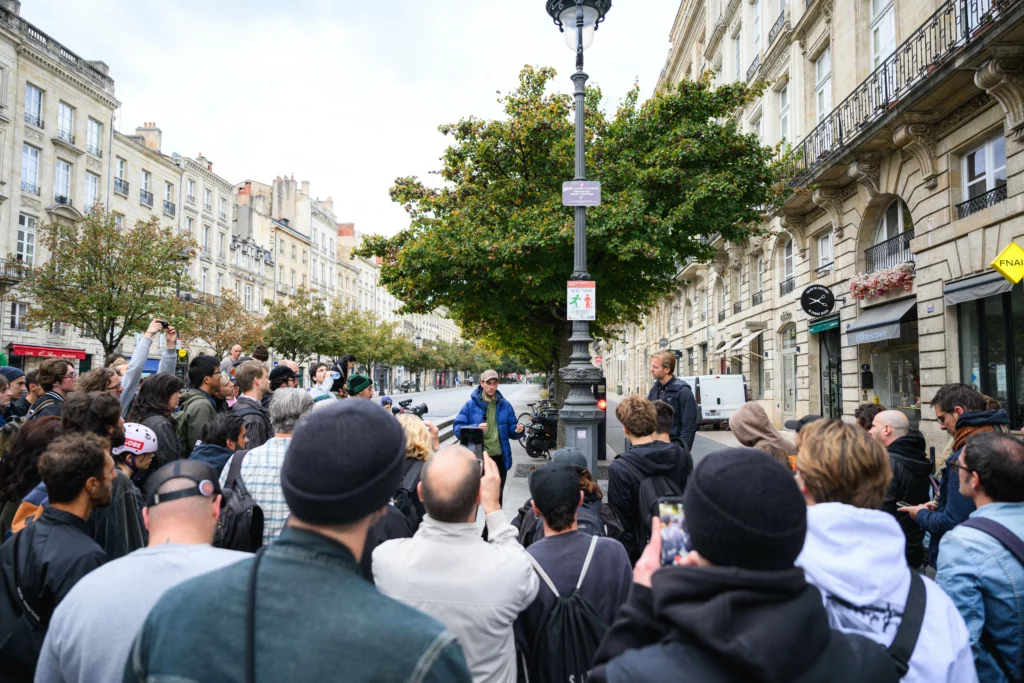
11 – Humanity
Once again the Connect festival called speakers and invited people more than qualified to reach an audience concerned by the evolution of society around the world.
Among the participants of this new edition of the festival we will get to know three figures involved in the transmission of one of the most challenging aspects of skateboarding culture across frontiers and oceans: sharing experiences and projects, for the youngest audiences and, especially, the most disadvantaged.
Stakeholders of a panel – which will take place in the chapter house of the Cour Mably on Friday, October the 17th from 04:45PM to 05:30PM – called Skateboarding programs in Under-Recognised Places are:
- Dr Indigo Willing, academic from the University of Sydney, Australia, co-author of Skateboarding, Power and Change, requested to be the moderator of this round table (refer to Radical Playtime – the podcast of Skatistan and the interview between Dr Indigo Willing and Ruby Mateja to learn more things about her involvement in the management of these sensitive subjects)
- Denia Kopita, an active member of Skateistan and Free Movement Skateboarding, based in Athens, a skateboarder both talented in 3D modeling and sharing respectable values: let us quote her own words, in an interview for Mission Magazine last summer: “If you told me a few years ago that I would be able to work in the skateboarding industry while making this world a bit better at the same time, I’d probably tell you that’s impossible. But thanks to the Free Movement Skateboarding and Skateistan, I can make it happen!)
- Dr Marie-Ermelinda “Maz” (or “Mazza”) Mayassi, born in Paris and from Congo, living in England, founder of Melanin Gals and Pals, lecturer – especially for Skateistan and Free Movement Skateboarding – devoted for safe places and meetings between black, indigenous and people of colour (BIPOC) members of the LGBTQI+ and women of all ages, also definitely implied in sharing her passion for dancefloor music.
You will understand it, here is the announcement of a very interesting panel. It’s the proof of the will of its speakers to go beyond the playful framework and, mostly occidental, of skateboard and skateboarders. Some people may just think that skateboarding is a noisy and destructive game, others may think it is just a sport, now an Olympic sport, and the din of the marching band which encourages the athletes in an eternal masculine and latent homoerotism. Through this sharing of international experiences (Cambodia, Afghanistan, Iraq, Lebanon, South Africa, and the list goes on) we can discover the proof of the satisfaction of individuals , adults and children, whose solidarity proves the great mood belonging to skateboarding and its involvement in a field of endless possibilities with a humanitarian vocation.